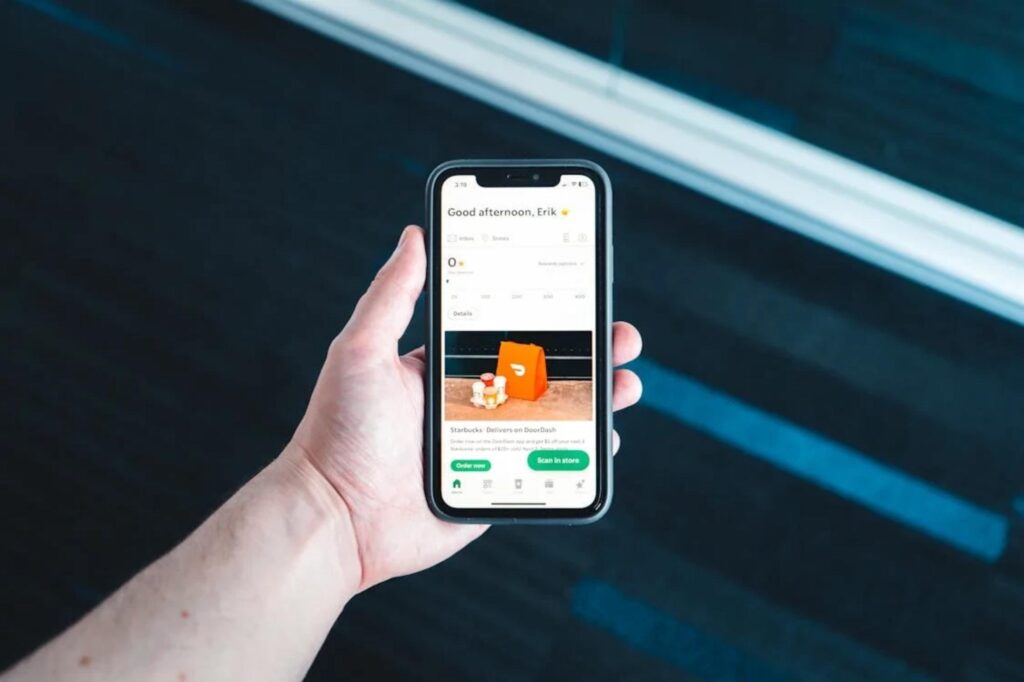Table of Contents
Introduction to Restaurant Apps and Their Importance
In today’s fast-paced digital landscape, restaurant apps have emerged as essential tools for enhancing customer experience and operational efficiency. These applications serve as a bridge between diners and their favorite eateries, enabling seamless interactions that go beyond traditional dining experiences. With features such as online ordering, click reservations, and loyalty programs, restaurant apps empower customers to engage with their favorite establishments at their convenience.
The importance of these apps cannot be overstated. They not only streamline the ordering process but also provide valuable insights into consumer behavior, allowing restaurants to tailor their offerings and marketing strategies effectively. As consumers increasingly turn to their smartphones for dining decisions, having a robust app can significantly enhance a restaurant’s visibility and competitiveness.
Moreover, restaurant apps facilitate direct communication with patrons, fostering a sense of community and loyalty. Through personalized notifications and promotions, establishments can keep diners informed and engaged, ultimately driving repeat business. In an era where convenience and efficiency reign supreme, the integration of restaurant apps is no longer a luxury — it’s a necessity for success in the culinary world. As we dive into case studies of successful restaurant apps, we’ll explore their transformative impact on both businesses and their customers.
Overview of Successful Restaurant Apps
In the competitive culinary landscape, several restaurant apps have emerged as game-changers, revolutionizing how patrons interact with dining establishments. One standout example is OpenTable, which streamlined the reservation process, allowing diners to book tables with ease and providing restaurants with valuable data on customer preferences. Its success lies in the seamless user experience and the ability to manage bookings efficiently, resulting in increased foot traffic and customer satisfaction.
Another notable player is Toast, an all-in-one restaurant management platform that integrates point-of-sale systems with online ordering and delivery services. By empowering restaurants to manage their operations from a single app, Toast has not only increased efficiency but has also enabled establishments to adapt quickly to changing consumer behaviors, particularly during the pandemic.
Additionally, Domino’s Pizza has leveraged technology to enhance its customer experience through its innovative app that allows users to customize orders, track deliveries in real-time, and even place orders via voice commands. The app’s success has led to a significant increase in sales and customer loyalty.
These examples illustrate how successful restaurant apps can enhance operational efficiency, improve customer engagement, and ultimately drive profitability in a rapidly evolving industry.
Case Study 1: App A – Features and User Experience
App A has revolutionized the dining experience with its seamless blend of functionality and user-centric design. Launched in 2021, this app quickly gained traction among food enthusiasts thanks to its intuitive interface and robust features.
One standout characteristic of App A is its personalized recommendations. By analyzing user preferences and past orders, it curates a tailored list of dishes, ensuring that every user finds something they’ll love. The app also includes an easy-to-navigate menu layout, which highlights seasonal specials and chef’s picks, enticing diners to try new offerings.
Moreover, App A prioritizes user experience with its streamlined ordering process. With just a few taps, users can customize their meals, select pickup or delivery options, and even schedule orders for later, all while tracking their order in real-time. The integration of a loyalty program rewards frequent diners with exclusive discounts and offers, fostering a sense of community among users.
Furthermore, the app’s social features allow diners to share their experiences and reviews, creating an interactive platform that enhances engagement. Overall, App A exemplifies how a thoughtfully designed restaurant app can significantly elevate the dining experience while driving customer loyalty.
Case Study 2: App B – Marketing Strategies
App B has revolutionized the way restaurants engage with their customers through innovative marketing strategies that seamlessly blend technology with customer experience. Recognizing the importance of personalized interactions, App B employs sophisticated data analytics to tailor promotions based on user preferences and dining habits. For instance, by tracking user orders and reviews, the app sends personalized offers to loyal customers on their birthdays or anniversaries, fostering a sense of appreciation and encouraging repeat visits.
Additionally, App B leverages social media integration to amplify its reach. Users can easily share their dining experiences, complete with enticing photos and reviews, directly from the app. This not only enhances user engagement but also acts as organic marketing, attracting new customers through authentic peer recommendations.
Furthermore, App B has successfully implemented gamification elements, rewarding users with points for every order, which can be redeemed for discounts or exclusive menu items. This strategy not only drives sales but also keeps users coming back, eager to accumulate rewards. By combining personalized marketing, social sharing, and gamification, App B has created a dynamic platform that not only elevates the dining experience but also significantly boosts restaurant visibility and customer loyalty.
Case Study 3: App C – Customer Engagement and Retention
- Personalized Offers: Utilizing data analytics, App C tailors promotions based on individual user preferences and past orders, ensuring that customers feel valued and understood.
- Loyalty Programs: The app incorporates a points-based rewards system that encourages repeat visits. Users earn points with every purchase, which can be redeemed for discounts or exclusive menu items.
- Interactive Features: Engaging elements such as polls for new menu items and feedback options encourage users to actively participate in shaping their dining experience.
- Community Building: The app fosters a sense of belonging by featuring local events and promotions, connecting users not just with the restaurant but with the broader community.
Impact of Restaurant Apps on Sales and Revenue
The rise of restaurant apps has fundamentally transformed the dining experience, significantly impacting sales and revenue. Take, for example, the case of Domino’s Pizza, which embraced digital innovation early on. By launching its user-friendly app, Domino’s reported a staggering increase in online orders, eventually generating over 60% of its total sales through digital channels. This shift not only streamlined the ordering process but also enhanced customer loyalty through personalized promotions and rewards, driving repeat business.
Similarly, Starbucks has leveraged its app to create a seamless integration of ordering, payment, and rewards. The company noted that app users spend approximately 20% more than in-store customers, underscoring how personalized offers and convenience can elevate average transaction values.
Moreover, smaller establishments like local coffee shops or family-owned diners have also benefited. By adopting apps that facilitate online ordering and delivery, many have seen a boost in off-peak sales, allowing them to maintain consistent revenue streams even during traditionally slower hours. Overall, the impact of restaurant apps on sales and revenue is undeniable, with businesses reaping the benefits of enhanced customer engagement, streamlined operations, and increased profitability in an increasingly digital landscape.
Technological Innovations in Restaurant Apps
The restaurant industry has seen a remarkable transformation thanks to technological innovations in mobile applications. One standout example is the integration of artificial intelligence (AI) to personalize customer experiences. Apps like Domino’s utilize AI to analyze customer ordering patterns, allowing them to suggest tailored menu items and promotions, thereby enhancing user engagement and boosting sales.
Another significant innovation is the implementation of contactless payment solutions. Restaurants such as Starbucks have seamlessly integrated mobile wallets within their apps, enabling customers to order and pay ahead, thus minimizing wait times and improving convenience. This shift not only fosters a more efficient dining experience but also aligns with health and safety protocols.
Furthermore, augmented reality (AR) is beginning to make waves in restaurant apps. For instance, some eateries are experimenting with AR features that allow customers to visualize menu items in their own space before ordering, creating an interactive and immersive experience.
These technological advancements not only streamline operations but also cultivate a loyal customer base by enhancing the overall dining experience, demonstrating that the future of restaurant apps is rooted in innovation and personalization.
Challenges Faced by Restaurant Apps
The rise of restaurant apps has transformed the dining experience, yet these innovations come with a unique set of challenges. One of the most significant hurdles is the intense competition in the app marketplace. With thousands of food-related apps available, standing out requires not only a robust marketing strategy but also continuous updates and user engagement to retain customer interest.
Additionally, technical issues can plague even the most well-intentioned app. Slow load times, glitches during ordering, or payment processing failures can frustrate users, leading to negative reviews and lost business. Security is another critical concern; with sensitive payment information at stake, any breach can severely damage a restaurant’s reputation and customer trust.
Moreover, integrating the app with existing systems, such as inventory management and point-of-sale systems, can be a complex task, often requiring significant investment in technology and training. Finally, restaurants must navigate the delicate balance between app convenience and maintaining personal customer service, as over-reliance on technology can sometimes alienate diners seeking a more traditional experience. Addressing these challenges is essential for restaurants aiming to leverage the full potential of their apps in a competitive landscape.
Future Trends in Restaurant App Development
- AI-Powered Personalization: Leveraging artificial intelligence, apps will offer tailored recommendations based on user preferences and past orders, ensuring a more engaging experience.
- Augmented Reality Menus: Imagine scanning a QR code and seeing a 3D representation of your meal! This immersive technology will help customers make informed choices and create excitement around menu items.
- Seamless Integration with Wearables: As smartwatches and fitness trackers gain popularity, restaurant apps will integrate with these devices to enable ordering and payment, making dining more convenient.
- Sustainability Features: With consumers increasingly valuing eco-friendly practices, future apps will showcase sustainable options, such as tracking carbon footprints or highlighting local sourcing.
- Enhanced Loyalty Programs: Utilizing gamification, apps will create interactive loyalty programs that reward customers for dining frequently, sharing on social media, or referring friends.
Conclusion: Lessons Learned from Successful Restaurant Apps
Successful apps prioritize user-centric design by creating intuitive interfaces that enhance the customer experience, making navigation easy for even the least tech-savvy patrons. Incorporating AI-driven recommendations allows restaurants to personalize experiences, leading to increased customer satisfaction and loyalty. Additionally, seamless integration with existing systems, such as POS and inventory management, streamlines operations and reduces overhead costs. Apps that foster community engagement through social features or loyalty programs help build lasting relationships with customers. Finally, continuous improvement based on user feedback is crucial, as restaurants that actively seek and implement customer suggestions often experience higher retention rates.
Please explore our site for more exciting content if you like this article.











